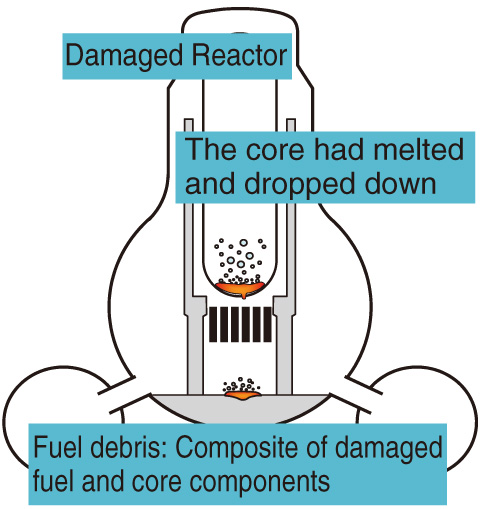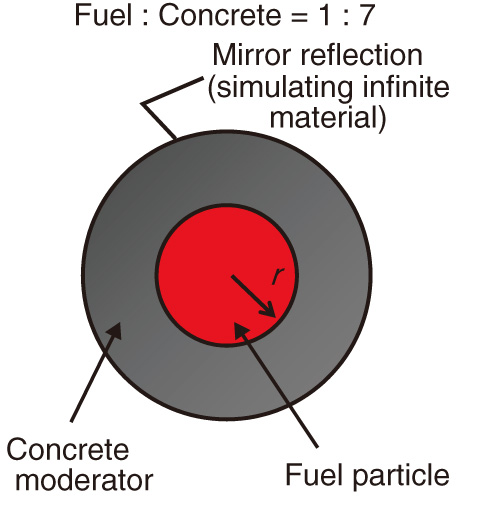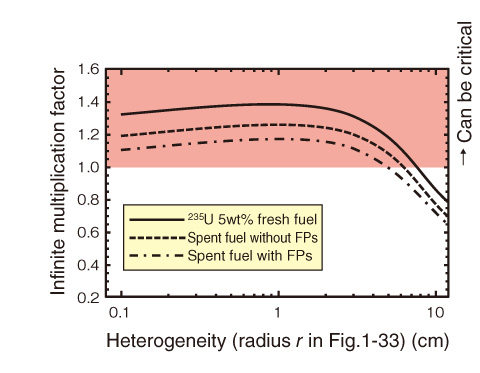
Fig.1-32 Fuel debris in damaged core

Fig.1-33 Example of calculation model of fuel debris

Fig.1-34 Infinite multiplication factor of supposed fuel debris
The Great East Japan Earthquake on March 11, 2011 caused a severe accident at the TEPCO’s Fukushima Daiichi NPS (1F). As shown in Fig.1-32, the cores of the reactors in 1F1-1F3 were seriously damaged owing to a failure of the core cooling system. The amount of fuel debris, which is a composite of damaged fuel and other core components, is estimated to be tens of thousands of kilograms in each unit.
There has been no indication of re-criticality of the fuel debris since the accident. The risk of re-criticality during removal of the fuel debris from each core should still be considered carefully because the minimum critical mass of the fresh fuel is only tens of kilograms. Although criticality control of normal fuel handling is designed on the basis of some determined fuel conditions, there are many unknowns regarding the fuel debris, such as its composition or shape. Therefore, an exhaustive criticality database including any conjectured conditions of the fuel debris, called a “criticality map,” needs to be prepared to judge the criticality risk quickly on the disclosure of its actual conditions.
We are analyzing the criticality of fuel debris considering many parameters, such as water content or fuel burn-up, by referring to previous studies in the literature.
An example of the calculation model is shown in Fig.1-33. The model represents fuel dispersed in concrete, which is a major material of the pedestal floor of the containment vessel.
The infinite multiplication factors of the fuel debris are shown in Fig.1-34. The lines in the red area indicate the conditions under which the fuel debris may be critical. Moreover, another calculation shows that the minimum critical mass of the fuel debris can be less than several thousand kilograms, which is significantly smaller than the amount of fuel in each core. The fuel debris containing concrete, therefore, must be handled cautiously to prevent re-criticality.
We continue the effort to complete the criticality map by computation and critical experiments considering fuel debris under diverse conditions, such as a submerged fuel-concrete mixture and a composite of fuel and the steel of the pressure vessel. The results are expected to provide useful information for judging the criticality risk for any actual fuel debris, and to contribute to the development of reliable re-criticality prevention and detection measures.